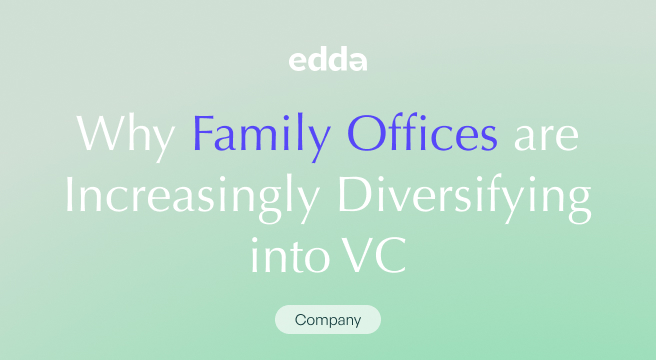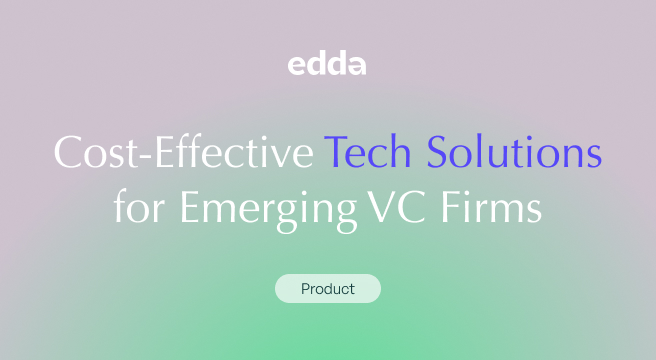Having established a solid foundation in the initial stages of venture capital engagement, the transition to the critical post-investment phase requires strategic involvement and active portfolio management.
In this article, we explore the involvement of venture capital firms after the commitment of capital, laying out the key strategies necessary to steer portfolio companies toward growth and market leadership. From providing strategic counsel and operational expertise to facilitating key industry connections, this phase is characterized by a hands-on approach aimed at maximizing the value of investments.
Through an exploration of active VC portfolio management techniques, stakeholder engagement, and the continuous assessment of market dynamics, we offer insights into the essential activities that define a venture capital firm’s contribution to the success of its investees, setting the stage for achieving long-term objectives and realizing significant returns.
In addition, discover how venture capital portfolio management software can help VCs streamline the process.
Active Portfolio Management
Once an investment is made, the venture capital fund’s role shifts towards active venture capital portfolio management to monitor investments while actively contributing to their growth and success. This stage involves a collaborative partnership between the VC and its portfolio companies, leveraging the VC’s resources, expertise, and network to enhance the company’s value.
Strategic Guidance and Mentorship
One of the primary roles of a VC in venture capital portfolio construction and management is to provide strategic guidance and mentorship to the founding team. This can involve advising on key business decisions, helping refine the business model, and assisting in strategic planning. The aim is to leverage the VC’s industry experience and insights to help the company navigate growth challenges, scale effectively, and achieve its strategic objectives.
To deliver strategic guidance and mentorship effectively, VCs should maintain open and frequent communication with the founding teams, ensuring that advice is timely and relevant. Aligning on goals, roles, and expectations from the outset can prevent misunderstandings and foster a productive partnership.
By leveraging their extensive industry experience, insights, and networks with venture capital portfolio management software, VCs can offer invaluable support to help companies navigate growth, scale efficiently, and meet strategic milestones. Customizing this support to the unique needs and growth stages of each portfolio company enhances its impact.
However, challenges such as differing visions between VCs and founders, the potential for VC overreach, and gaps in industry-specific knowledge can complicate this relationship.
To mitigate these issues, regular strategy discussions and a commitment to open dialogue are essential for aligning objectives and preserving the founding team’s entrepreneurial autonomy. In instances where VCs lack deep industry expertise, enlisting external advisors or specialists can provide the necessary guidance.
In addition, addressing the operational and cultural nuances of the portfolio company ensures that VCs’ recommendations are both practical and aligned with the company’s ethos.
One real-world example illustrating these principles is the partnership between venture capital firm Sequoia Capital and WhatsApp. Sequoia Capital provided not just funding but also extensive strategic guidance and mentorship to WhatsApp’s founders, helping refine their business model and strategic planning. This included advising on key decisions such as the focus on a clean, ad-free user experience and international expansion strategies, which were crucial to WhatsApp’s growth and eventual acquisition by Facebook for $19 billion in 2014.
Networking & Business Development Support
VCs can significantly contribute to their portfolio companies’ growth by facilitating introductions to potential customers, partners, and industry experts. This networking support can open doors to new business opportunities, strategic partnerships, and valuable collaborations that might otherwise be out of reach for a startup. The VC’s network can also be instrumental in identifying and recruiting top talent to strengthen the company’s team.
Venture capitalists can significantly boost their portfolio companies’ growth by leveraging their networks and organizing various initiatives. This includes hosting industry events where startups can meet potential customers and partners, using personal contacts to make direct introductions to key industry players, and utilizing platforms like LinkedIn for informal connections.
They can also arrange focused one-on-one meetings between startups and decision-makers, involve portfolio companies in panels and workshops to establish them as thought leaders, and collaborate with other investment entities to expand networking opportunities.
Operational Support
In addition to strategic guidance, VCs often provide operational support to their portfolio companies. This can range from assisting with financial management and planning to advising on marketing strategies and operational efficiencies. For companies in the early stages of growth, this operational support can be invaluable in establishing robust business processes and systems that will enable the company to scale effectively.
This support could involve deploying financial experts to refine financial management systems, enhance transparency in cash flow, and optimize budgeting processes. Simultaneously, VCs may bring in marketing mavens to craft targeted strategies that resonate with the intended audience, ensuring that startups reach and effectively engage their market segments. Additionally, operational audits conducted by seasoned consultants can spotlight and eliminate inefficiencies, streamlining processes to boost productivity and cost-effectiveness.
On the technological front, advisors can assess and upgrade the tech infrastructure to support scalability and security, pivotal for tech-centric ventures. The human element isn’t overlooked, with VCs facilitating the acquisition of top-tier talent and the establishment of solid corporate governance structures.
To illustrate, Google Ventures (GV) provided extensive operational support to Nest Labs, encompassing financial management enhancements, strategic marketing guidance, and operational process optimization. GV’s involvement was instrumental in refining Nest’s budgeting and forecasting, positioning the brand effectively in the smart home market, and streamlining product development and customer service operations.
Additionally, GV facilitated access to cutting-edge technology resources and played a key role in attracting top industry talent. This support significantly contributed to Nest’s growth and success, culminating in its acquisition by Google for $3.2 billion in 2014, showcasing the vital role of VC operational support in a startup’s scaling journey.
Board Participation
Many VCs take an active role in governance by securing a seat on the portfolio company’s board of directors. This involvement allows the VC to contribute to high-level decision-making, ensure alignment with the strategic vision, and advocate for the interests of all stakeholders. Board participation also provides a formal mechanism for the VC to remain engaged with the company’s progress and challenges.
Avoiding Overreach
While active involvement is a key value-add of venture capital, it’s important for VCs to strike the right balance between providing support and allowing the company’s management team the autonomy to run the business.
Overreach or micromanagement by VCs can stifle innovation and decision-making, potentially hindering the company’s growth. The best VC-firm relationships are those where the VC acts as a trusted advisor, offering support and guidance while respecting the management team’s operational leadership.
The WeWork saga, particularly its complex dynamics with major investor SoftBank, serves as a cautionary tale about the risks of venture capital overreach. SoftBank’s substantial investment and deep involvement in WeWork fueled aggressive expansion and lofty valuation goals. This close partnership initially seemed beneficial, with SoftBank’s backing enabling rapid growth and scaling efforts.
However, the intense push for expansion and the high-stakes environment led to overlooked financial sustainability and governance practices, which became glaringly apparent as WeWork approached its public offering.
The fallout from WeWork’s failed IPO in 2019, including a significant devaluation and the departure of CEO Adam Neumann, highlighted the detrimental impact of investor micromanagement and overambition. This scenario illustrates the critical need for venture capitalists to strike a delicate balance between providing valuable support and allowing the entrepreneurial team the autonomy to lead.
Monitoring & Performance Measurement
Effective VC portfolio construction and management also involves regular monitoring of the company’s performance against key metrics and milestones. This ongoing assessment helps both the VC and the company’s management to identify areas of concern early and to make informed decisions about strategic adjustments, additional funding rounds, or other interventions that may be necessary to keep the company on its growth trajectory.
Incorporating Edda’s sophisticated venture capital software tools amplifies the efficacy of such evaluations.
Edda’s suite, designed with an emphasis on intuitive dashboards and analytics, offers a granular view of performance metrics, enabling stakeholders to track the trajectory of portfolio companies with precision. The platform’s ability to aggregate and analyze data in real time facilitates a comprehensive understanding of a company’s financial health, operational efficiency, and market position. This level of insight is instrumental in preempting challenges, tailoring strategies to mitigate risks, and seizing opportunities for accelerated growth.
Edda’s platform fosters collaboration between venture capital firms and their portfolio companies by providing a shared space for data and insights. This collaborative environment ensures alignment on goals and strategies, enhancing the decision-making process.
Regular performance reviews, facilitated by Edda’s robust reporting tools, allow for a dynamic assessment of the company’s journey towards its milestones. These reviews often culminate in strategic discussions about potential pivots, the infusion of additional capital, or other critical interventions aimed at propelling the company forward.
Are you ready to elevate your portfolio management strategy? Discover how Edda’s best portfolio management tools can transform your approach with powerful analytics and collaborative tools designed for the modern venture capitalist.









